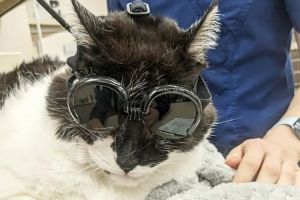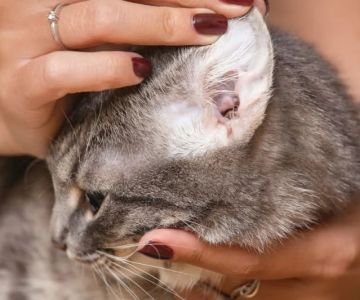
Pet Insurance 101: What It Covers & When It Pays
- Understanding How Pet Insurance Works
- What Pet Insurance Typically Covers
- When Pet Insurance Pays and What to Expect
- Common Exclusions and Limitations
- Real-Life Case Examples
- Choosing the Right Pet Insurance Plan
- Get Reliable Guidance with Pet & Puppy
1. Understanding How Pet Insurance Works
Pet insurance is designed to help pet owners manage unexpected veterinary expenses. Unlike human health insurance, pet insurance typically works on a reimbursement model. This means you pay the vet upfront, then submit a claim to your insurance company to get reimbursed for eligible expenses. The goal is to reduce the financial burden when your furry friend needs medical care—especially during emergencies.
Policies vary widely depending on the provider, pet type, age, and breed. Understanding the coverage options and limitations before purchasing a plan ensures you’re protected when it matters most. Whether you have a new puppy or an aging cat, the right insurance can make a major difference in how you handle veterinary costs.

Greater Cincinnati Veterinary Specialists and Emergency Services
114 Beacon Dr #3, Wilder, KY 41076, USA
2. What Pet Insurance Typically Covers
Most pet insurance plans cover unexpected injuries and illnesses. This includes accidents, broken bones, infections, chronic diseases, and certain hereditary conditions. Comprehensive plans may also include diagnostic tests such as X-rays, MRIs, and blood work.
Here’s a breakdown of the common types of coverage:
Accident-Only Coverage
Designed for emergencies like injuries or poisoning. It’s the most affordable type but won’t cover illnesses.
Illness Coverage
Covers the cost of diagnosing and treating diseases such as cancer, diabetes, and allergies. This is ideal for pets prone to certain health issues.
Comprehensive Coverage
Combines both accident and illness protection, and sometimes includes coverage for alternative therapies, prescription medications, and hospitalizations.
Wellness Add-Ons
Optional wellness plans can include routine checkups, vaccinations, and dental cleanings—services not typically included in standard policies.
3. When Pet Insurance Pays and What to Expect
Understanding how and when pet insurance reimburses is crucial. After visiting your vet, you’ll submit an invoice and claim form to your insurer. Depending on the provider, reimbursement rates typically range from 70% to 90% after your deductible is met.
For instance, if your policy has an 80% reimbursement rate and a $250 deductible, and your vet bill is $1,000, you’d be reimbursed around $600 after subtracting the deductible and your share. Claims processing times vary but generally take 3–10 business days.
It’s important to note that most policies have a waiting period before coverage begins—usually 2–4 weeks for illnesses and a few days for accidents. Planning ahead ensures you’re covered before an emergency occurs.
4. Common Exclusions and Limitations
While pet insurance offers peace of mind, it’s not all-encompassing. Pre-existing conditions—any illness or injury diagnosed before the policy start date—are generally excluded. Other common exclusions include breeding costs, cosmetic surgeries, and routine preventive care unless you add wellness coverage.
Breed-specific conditions can also affect coverage. For example, certain large dogs may have exclusions for hip dysplasia, and some flat-faced breeds might not be covered for respiratory issues. Always review the fine print to avoid surprises.
5. Real-Life Case Examples
Consider a true-to-life scenario: Emily’s Golden Retriever, Bailey, tore a ligament while playing fetch. The surgery cost $3,500. Because Emily had a comprehensive pet insurance plan with an 80% reimbursement rate and a $200 deductible, she received nearly $2,600 back—saving her from a financial strain.
Another pet owner, Mark, didn’t have insurance when his cat Luna developed kidney disease. The monthly treatment costs exceeded $400, quickly adding up. Mark later shared that he wished he had secured coverage earlier, as it would’ve significantly reduced his out-of-pocket expenses.
6. Choosing the Right Pet Insurance Plan
Selecting a pet insurance plan depends on your pet’s breed, age, and health history. Young, healthy pets generally qualify for lower premiums, while older pets or those with chronic issues may face higher costs or limited coverage.
When comparing policies, pay close attention to:
- Annual and lifetime coverage limits
- Reimbursement rates and deductible options
- Waiting periods and exclusions
- Customer reviews and claims processing reputation
Transparency is key—opt for a provider that clearly explains what’s covered and offers flexible payment options. Many pet parents also choose to add wellness coverage to manage preventive care costs more efficiently.
7. Get Reliable Guidance with Pet & Puppy
If you’re new to pet insurance or unsure which plan best suits your furry friend, Pet & Puppy offers expert advice and trusted recommendations. Our platform helps pet owners compare top-rated insurance providers, understand coverage details, and find policies tailored to their needs and budgets.
At Pet & Puppy, we believe every pet deserves protection and care without financial stress. Whether you’re adopting your first kitten or managing a senior dog’s health, we connect you with reliable insurance insights and services to keep your pet happy and healthy.








 All-Star Animal Hospital4.0 (665 reviews)
All-Star Animal Hospital4.0 (665 reviews) Acoma Animal Clinic4.0 (318 reviews)
Acoma Animal Clinic4.0 (318 reviews) Prices Creek Veterinary Service4.0 (190 reviews)
Prices Creek Veterinary Service4.0 (190 reviews) Peaceful Passing Hospice and In-Home Pet Euthanasia4.0 (36 reviews)
Peaceful Passing Hospice and In-Home Pet Euthanasia4.0 (36 reviews) Hakuna Matata Koi5.0 (43 reviews)
Hakuna Matata Koi5.0 (43 reviews) Cumback Veterinary Services4.0 (60 reviews)
Cumback Veterinary Services4.0 (60 reviews) How to Choose the Right Pet Supplement Brand: Essential Tips for Pet Owners
How to Choose the Right Pet Supplement Brand: Essential Tips for Pet Owners How to Pet-Proof Your Home: Safety Tips for Every Room
How to Pet-Proof Your Home: Safety Tips for Every Room Cat Hairballs: How to Prevent and Manage Them Effectively
Cat Hairballs: How to Prevent and Manage Them Effectively Pet Social Media: Should You Let Your Pet Be an "Influencer"?
Pet Social Media: Should You Let Your Pet Be an "Influencer"? How to Train Your Dog to Be Alone at Home: Expert Tips and Strategies
How to Train Your Dog to Be Alone at Home: Expert Tips and Strategies Using Positive Reinforcement vs Punishment in Pet Training: What You Need to Know
Using Positive Reinforcement vs Punishment in Pet Training: What You Need to Know